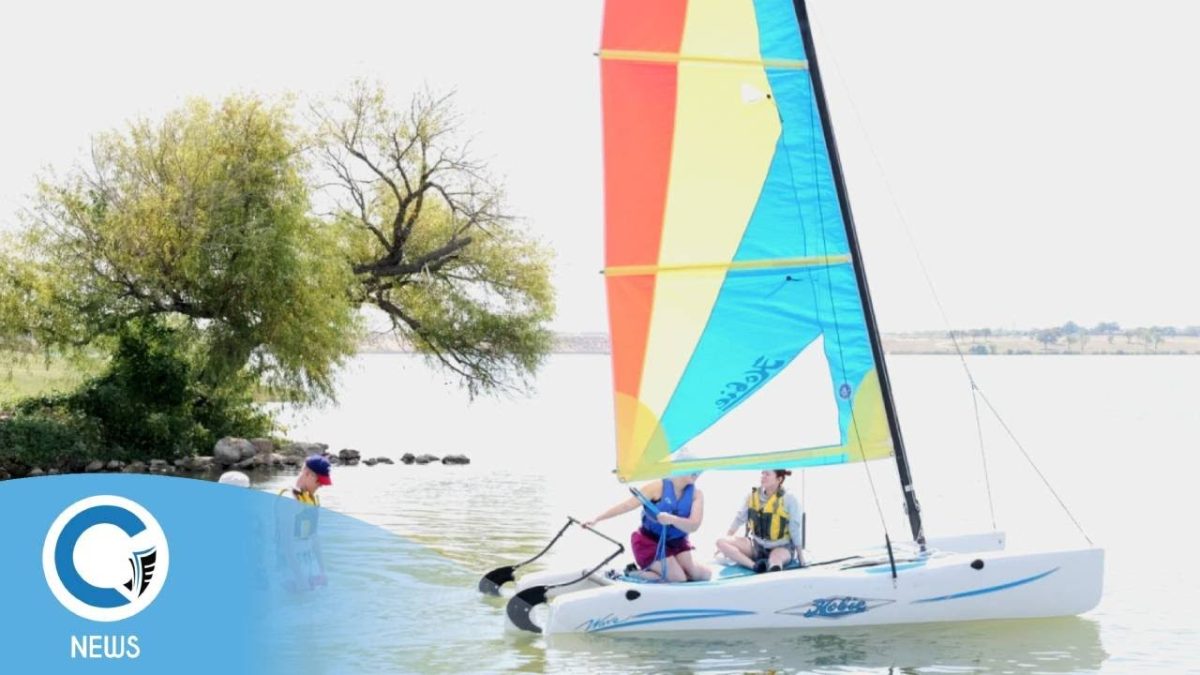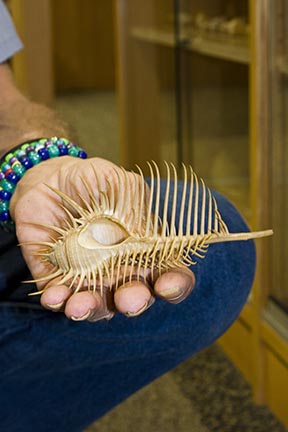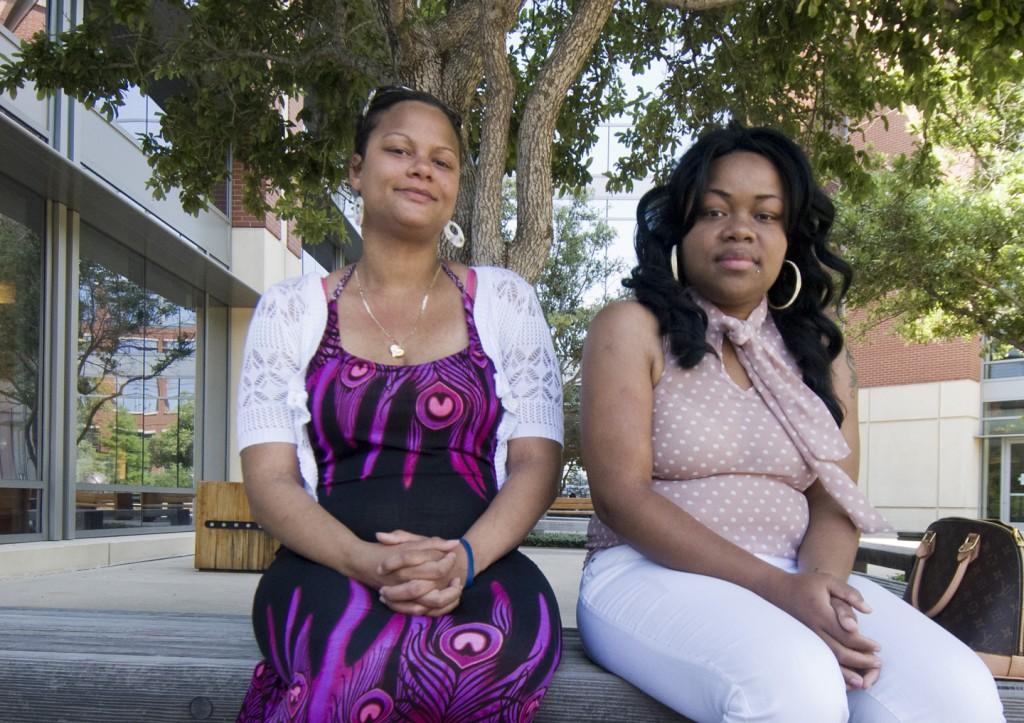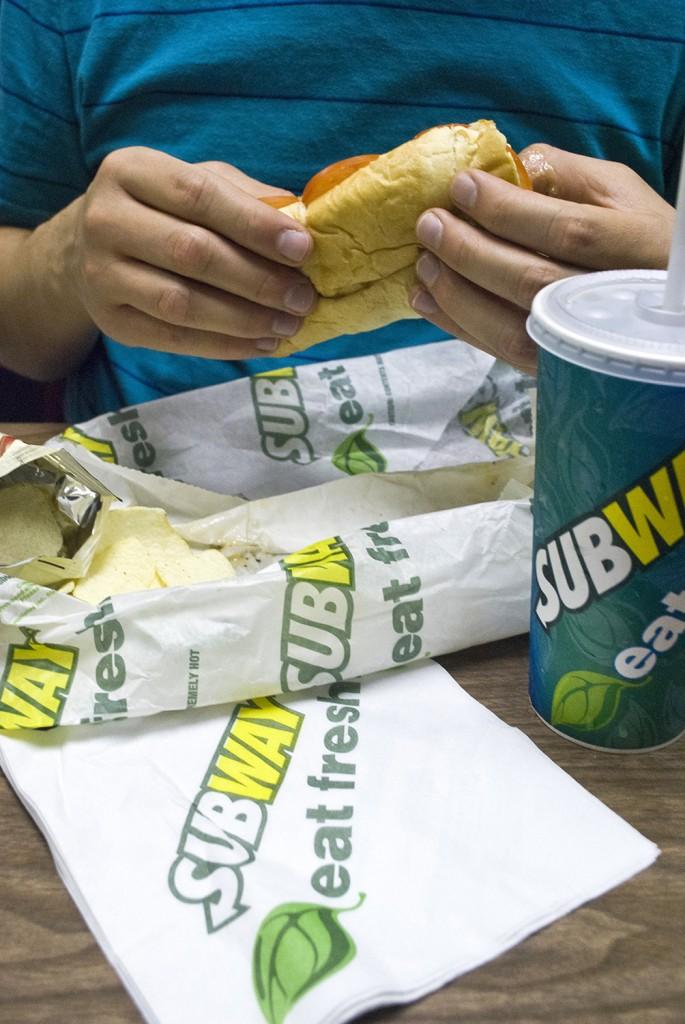
Photo by Brianda Vizcarra/The Collegian
By Karen Gavis/se news editor
For more than 30 years, a SE Campus electrician has doubled as a shell enthusiast. His well-ordered, informative exhibit of specimens is now displayed in the SE Campus library.
“I’ve been over every inch of the Texas coastline,” said Rick Yoes. ”You spend enough time on the beach, inevitably, you are going to find some shells.”
Once his initial collection began to flourish, Yoes said he bought a few conchology books and was swiftly engrossed. Since then, he has explored Florida and California beaches and served as president of the North Texas Conchological Society.
“I have been used as an expert on the subject,” he said.
Malacology is a branch of biology that studies mollusks, such as snails and slugs. And conchology is the study of mollusk shells. Yoes said there are more than 100,000 types of shells. However, of those, about 10,000 are actually collected.
“Some collectors specialize in minis,” he said. “I would say I specialize in cheap shells. I’m a working guy.”
Yoes’ scientifically labeled collection offers a variety of sizes, shapes, colors and textures. A complete row presents a shell species in graduating sizes ranging from a baby to what may have been a great-granddaddy mollusk. Yoes’ favorite is a Charonia tritonis that he acquired from a dealer. The species grows in Australia’s Great Barrier Reef.
Yoes said he once held a shell a collector paid $10,000 for.
“It comes down to the rarity of the animal,” he said. “Common species can be acquired more cheaply.”
Cowrie shells are fertility symbols that are sometimes used as currency, Yoes said. Some of the shells in his collection actually were used for currency.
“Three shells were change for lunch,” he said.
A large part of Yoes’ collection came from a previous employer who owned a mail order shell business. He received an influx of shells when her business closed.
“She paid us in specimens,” he said.
SE librarian Joe Klemm said some SE teachers have sent students to view the exhibit.
“So, it is being used in classes,” she said. “We were really grateful when he offered to let us put it out.”
In addition to TCC’s College for Kids, Yoes has shared his understanding of shells with visitors at the Dallas Museum of Science and History and has provided lectures and displays for Dallas and Grand Prairie public libraries.
Not unlike Trekkies, shell collectors have conventions where they can meet and share information with other like-minded shellers.
Some information is valuable.
Yoes said some snails are poisonous, and people need to use caution in a marine environment. A scuba diver he knew was actually killed by a poisonous snail. The diver thought the snail was pretty, picked it up and not having any pockets, he stuck it in his face mask. The poisonous snail then bit him under the eye.
“If you don’t know what it is, don’t touch it,” Yoes said.
Some additional advice Yoes offered for the novice collector is to spend time on the beach, love the beach and then buy a book.
“Any book on sea shells is going to astound you if there are photos,” he said.




























